Home / Goals & Strategy
Knowing our past and current performance is only the first step on our sustainability journey.
Setting ambitious and strategic goals is critical to making continual progress and actions with identified outlines our roadmap for success.
Building on the CRSB’s first National Beef Sustainability Strategy set in 2016, the Canadian Beef Industry came together to establish a suite of strategic long-term goals, looking towards 2030.
These goals address a diverse range of priority topic areas and demonstrates how we are working together to set ambitious targets with strategic actions to make real improvements.
The 2030 goals highlight the role of the Canadian beef sector as integral for climate change mitigation, conserving biodiversity and our natural ecosystems, supporting people and communities, embracing innovation, and our contribution to a sustainable food system.
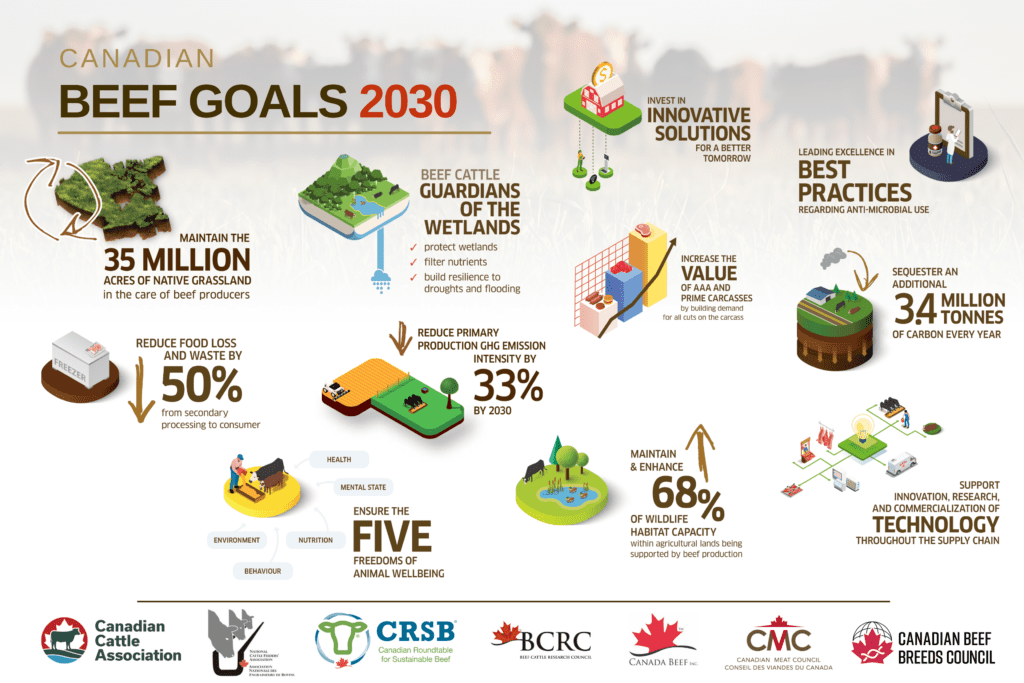
Over the past 10 years, the CRSB has built a collaborative community that encompasses passionate people involved in the sustainability of the beef value chain and beyond.
Our main strategic activities to further this community for the next few years include:1
1 CRSB NBSA Strategy, 2024
2 Canada’s National Beef Strategy – 2030 Goals
Environmental impact is often the first thing to spring to mind when thinking of the sustainability of a food system. The Canadian beef industry has set some ambitious goals to make environmental improvements by 2030 across a variety of key areas, including reducing greenhouse gas emissions intensity, reducing waste, conserving land and water used for beef production and enhancing biodiversity.2 Beef farmers and ranchers across Canada, and those involved throughout the beef supply chain are committed to working together to achieve these goals.
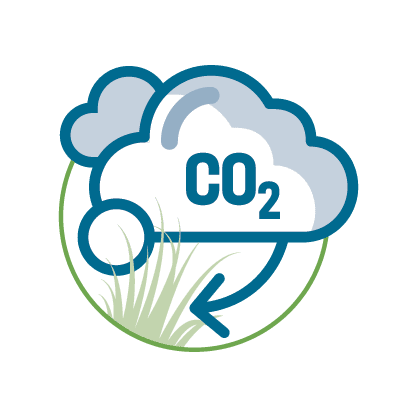

2030 Goals3
Strategic Actions1
Scientific research innovations and many collaborations are already underway in this
area.
Key actions for the CRSB and its members include:
1 CRSB NBSA Strategy, 2024
3 Canadian Beef Advisors GHG and Carbon 2030 Goals

2030 Goals3,4
Strategic Actions1
Players across the beef supply chain from farm to fork are setting goals and targets for reducing food loss and waster, and all are committed to be part of the solution. This includes efficient use of resources, up-cycling food waste by beef producers, and reducing both food loss and food waste from the primary processor all the way through to the consumer.
Research indicates that 82% of Canadian Consumers are trying to make sustainable choices in their life overall, and 69% believe reducing food waste is the top actionable sustainable choice (CRSB [Abacus Data] consumer study, 2024).
Key actions for the CRSB and its members include:
1 CRSB NBSA Strategy, 2024
3 Canadian Beef Advisors GHG and Carbon 2030 Goals
4 Canadian Beef Advisors Beef Quality and Safety 2030 Goals
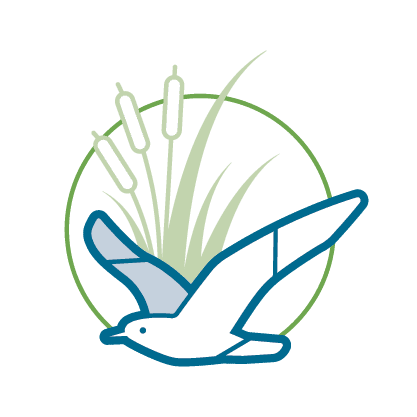

2030 Goals5
Strategic Actions1
There has been a strong focus on the role that Canadian beef producers play in improving and conserving land used for grazing cattle, and the critical habitat for wildlife and species at risk that these lands, particularly Canada’s native grasslands, play – much of which are managed by Canadian beef producers.
We are all working to collaborate on initiatives that support producers, to incentivize and reward their conservation efforts that provide key nature-based solutions to climate change mitigation, and to build trust through sharing these stories importance with the public.
Key actions for the CRSB and its members include:
1 CRSB NBSA Strategy, 2024
5 Canadian Beef Advisors Land Use and Biodiversity 2030 Goals

2030 Goals6
Strategic Actions1
Key actions for the CRSB and its members include:
1 CRSB NBSA Strategy, 2024
6 Canadian Beef Advisors Water 2030 Goals
Social factors are equally important to a product’s sustainability. The social assessment made key observations in the life cycle of Canadian beef production, identifying strengths and how to manage the risks and challenges in regard to labour management, people health and safety, animal care and antimicrobial use.6,7

2030 Goals9
Strategic Actions1
Key actions for the CRSB and its members include:
1 CRSB NBSA Strategy, 2024
9 Canadian Beef Advisors People Health and Safety 2030 Goals

2030 Goal10
Strategic Actions1
This is a new topic area in the current strategy. Availability of skilled labour is an important issue being tackled across the Canadian agri-food system and many other sectors, and the Canadian beef industry is no different. While the labour gap is growing, there are many job opportunities, but creative solutions are needed to match the right people, in the right place with the right jobs, with training and retention strategies.
Key actions for the CRSB and its members include:
1 CRSB NBSA Strategy, 2024
10 Canadian Beef Advisors Technology 2030 Goals
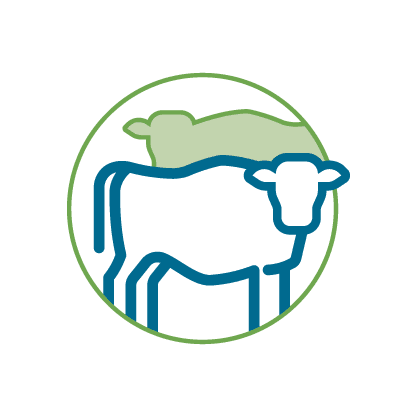
2030 Goals11
Strategic Actions1
Animal care is a success story in Canada, and many federal regulations and industry standards (e.g. Code of Practice for the Care and Handling of Beef Cattle) play a role; increased coordination and communication across areas within the beef supply chain are areas for improvement to fully secure animal care throughout the cattle life cycle.
Key actions for the CRSB and its members include:
1 CRSB NBSA Strategy, 2024
11 Canadian Beef Advisors Animal Health and Welfare 2030 Goals
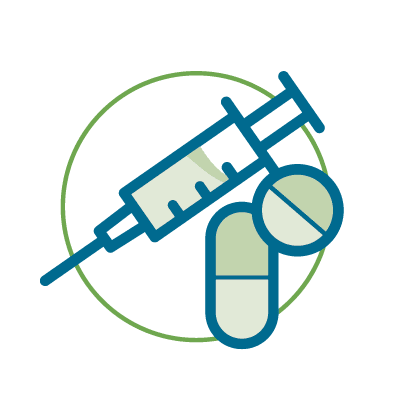
2030 Goal11
Strategic Actions1
Antimicrobial use is important to the industry and its stakeholders. There are good practices currently being utilized by producers to ensure responsible use. Further training would be beneficial to drive continuous improvement.
Room for improvement exists with respect to the adoption of management practices associated with AMU, including further reduction of stressors and increased access to veterinarians in some
regions.
Key actions for the CRSB and its members include:
1 CRSB NBSA Strategy, 2024
11 Canadian Beef Advisors Animal Health and Welfare 2030 Goals
The economic performance underlies all aspects, and is critical to the success of any food system.12 The economic sustainability of the Canadian beef industry has undergone many supply and demand shocks over the past few years, including the COVID-19 pandemic and widespread severe drought in 2021.12
The following economic goals and actions will continue to the viability and resilience of the Canadian beef industry.

Goal1
Increase the financial viability of beef production in Canada.
Strategic Actions1
The resilience and ability to shift according to market conditions has resulted in increased off-farm income and a growing feedlot sector despite high feed prices. However, inflationary pressures have increased the cost of inputs faster than cost of outputs.
Key actions for the CRSB and its members include:

Goal1
Increase demand for Canadian beef by building awareness and trust in sustainable beef production in Canada.
Strategic Actions1
Consumer demand here in Canada and globally for protein remains strong, with a preference for high quality beef.
Key actions for the CRSB and its members include:
Set by the CRSB’s Scientific Advisory Committee, research priorities identify research and data gaps to improve on the robustness of the National Beef Sustainability Assessment. Collaborations and research and investments to address these gaps in preparation for the next Assessment will be critical to continuous improvements.
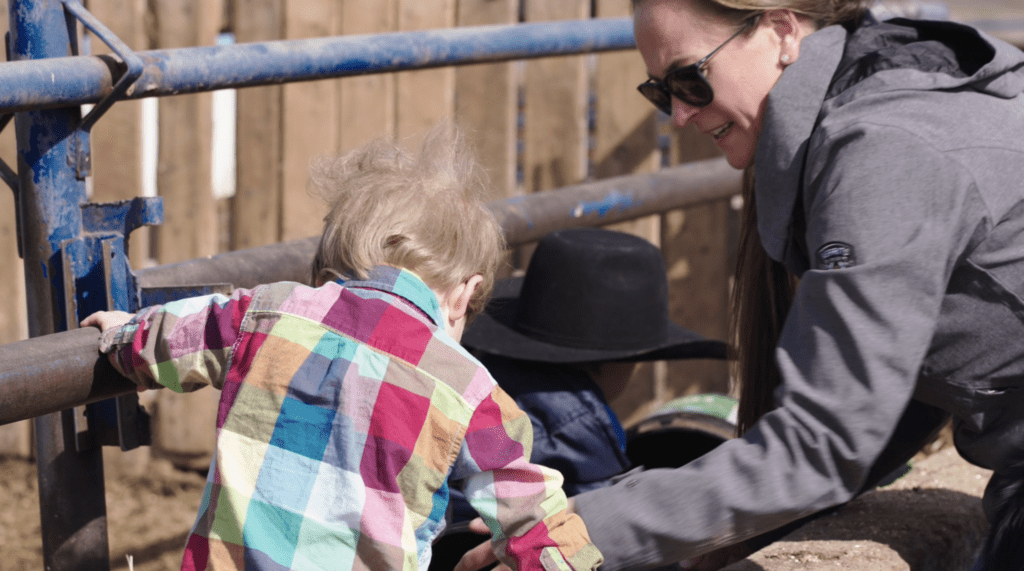
Canadian Roundtable for Sustainable Beef
180-6815 8th Street NE, Calgary, AB T2E 7H7
info@crsb.ca
© 2025 Canadian Roundtable for Sustainable Beef
/